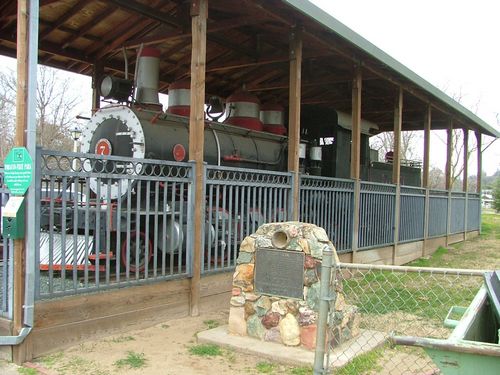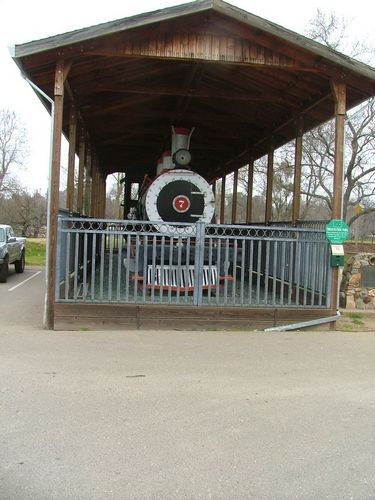Group Saves Historic Rail Corridors
The decision was made. The Amador Foothills Railroad was to be closed down due to the substandard condition of the ties and the rails. Once described as the most beautiful, mountain railroad contained within one county. The rails, known for decades as the Amador Central Railroad and for its first year as the Ione & Eastern Railroad, were expected to be removed and sold for salvage.
Residents of Amador County who have an appreciation for historic icons were unhappy with the future of "their" railroad. The eleven mile long AFRR was the only link to the national railroad network. It’s closure and salvage would forever isolate Amador County from the rail services to the outside world.
Recreational Railroad Coalition, Inc. (RRC) is a consortium of rail buffs with a special interest in saving historic old railroads from extinction. As rail-preservationists, these rail fans seek rail corridors like the AFRR and negotiate lease arrangements for the purpose of preserving the antiquated steel ribbons for recreation, education and for purposes of the community's history. Comprised of volunteers, these recreational railroaders return life to the otherwise dead rails in their antique maintenance of way cars as they go about maintaining the rails with vegetation control, enhancing security with their work to control unlawful garbage dumping, trespassing, theft and vandalism.
A recent and visible example of vandalism control is the sudden appearance of graffiti on the trestle across hiway 88 at the old East Ione Trestle. A crew of volunteers arrived recently to paint out 90% the offending symbols. The graffiti that was painted over the hiway was not covered as it was deemed to be too dangerous for the volunteers of RRC.
The AFRR is the second historic railroad corridor to be saved by RRC. The Linden Branch of the ST&E Railroad in San Joaquin County is the first such railroad to come under the lease auspices of RRC.
Drivers on hiway 88 wave at the colorful little gasoline locomotive-like track inspection vehicles, frequently stopping to take pictures of the equipment and the operators as they travel on the AFRR.
Grant Vogel, RRC Roadmaster for the AFRR and a resident of Plymouth said that they are engaged in the re-construction of the turn-around wye at the western terminous of the railroad in Ione. The steam engines used the wye as they turned for the return trip to Martell. The last steam engine to use the wye was "Iron Ivan," currently on display in the park behind the Ione City Hall. Persons who would be interested in helping with this project are invited to contact Vogel at wprr@willowcreekca.net to learn more about the wye rebuild project and to offer their volunteer help and equipment.
RRC is the only rail preservation organization in the western United States. Their interest and work are crucial in protecting historic rails from being destroyed and sent to the smeltering ovens.
Last year at the Ione Railfair we had over 25 Maintence Of Way Speeders attend. All the speeders were restored to factory new condition. Several video displays were presented and local old timers participated in educating on lookers of the History of the Amador Foothills Railroad. Numerous participants camped out trackside for the 3-day event at the site of the Ione Depot. Recreational Railroad Coalition leases and maintains this rail corridor along with another branch line in Stockton, the Linden branch of the Stockton Terminal and Eastern Railroad.
Numerous static displays will be set up again this year, MOW equipment and demonstrations of operating MOW equipment we use to maintain this corridor.
Some photos and an article documenting the 2006 Railfair
Registration started out here with all the Speeders being subjected to a safety inspection.
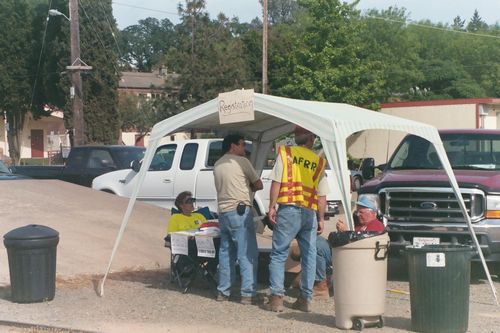
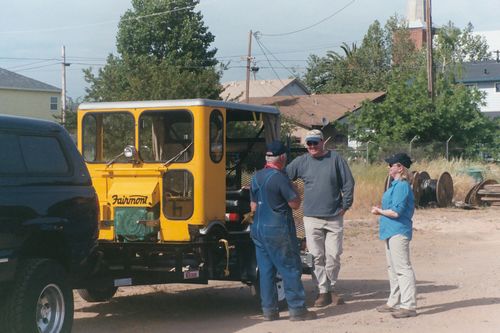
Some of the MOW equipment on display consisted of cranes, spike pullers, etc. They have been restored and we use them for normal every day track maintaince to maintain both branch lines.
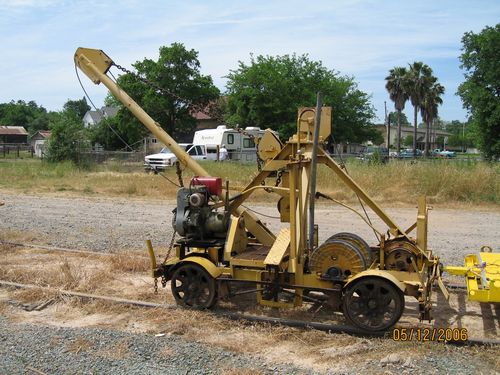
Next photo is of the tie crane and a track lifter. Both built in the 1950's era.
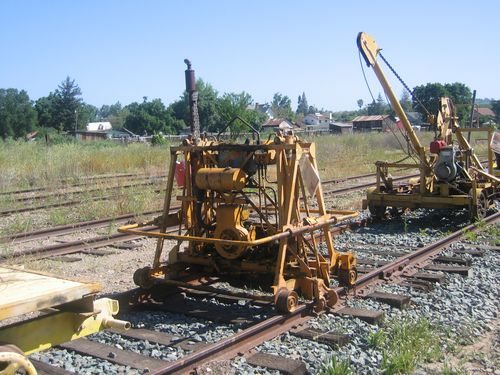
A Track Mobile was on site and demonstrated movement and mobility. This unique piece of equipment moves freight cars around small yards and terminals. Don't let its size fool you as it can move 5 loaded cars on level ground. The tires shown are how the machine moves when not on rails.
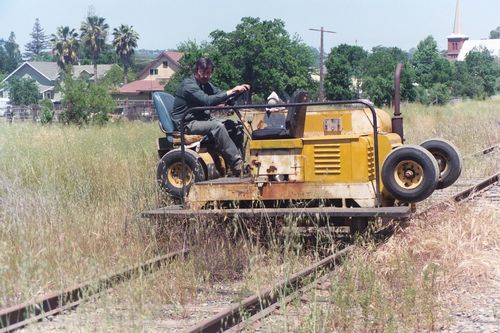
Photos of the line up ready for one of the 5 excursions runs we did last year,
Participants attended from Los Angles to Seattle and beyond.
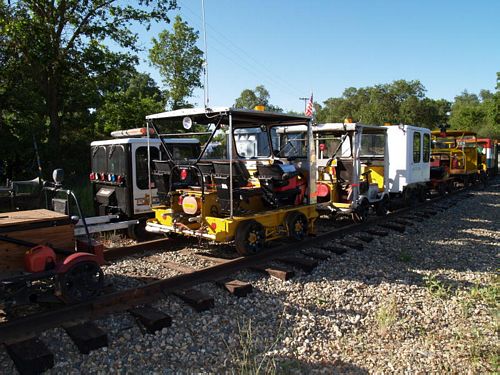
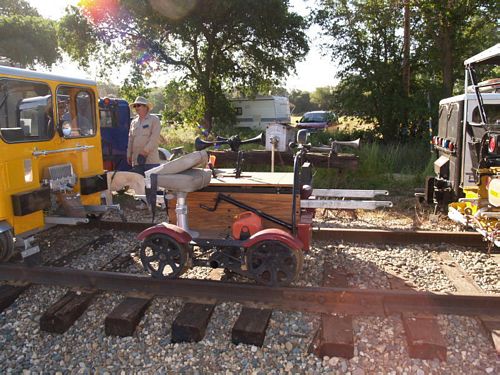
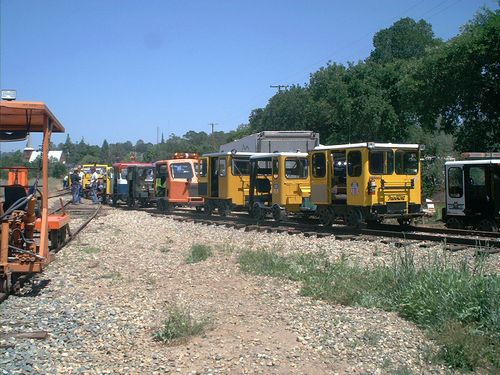
Custom Speeders were also in attendance. Beaver Cars and other custom Speeders.
This Beaver Car was very nicely restored, a lot of chrome and a hydraulically operated mechanism to tilt the cab up for access to the engine and drive train components.
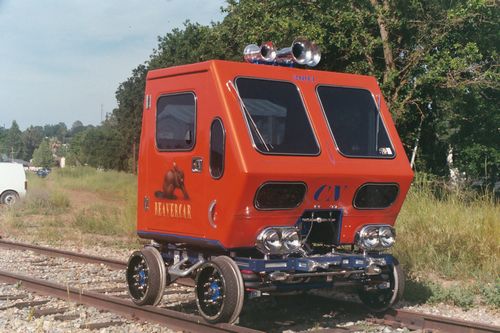
Rear end of the Beaver, note the air pump, twin air tanks and suspension components.
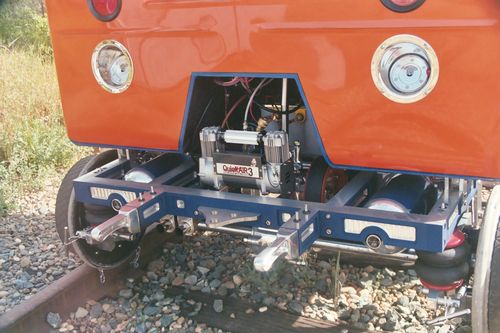
Very nicely restored Fairmont model MT14.
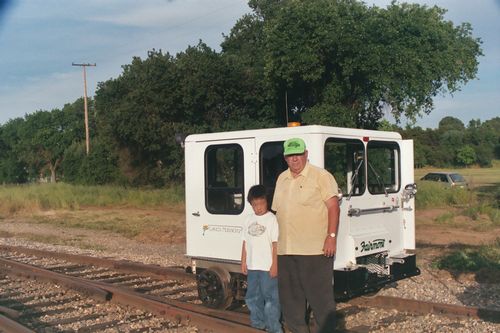
Another example of a restored Fairmont being safety checked by Larry Shaw.
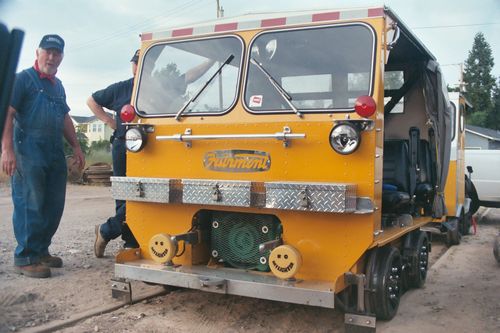
A CNRail CBL restored speeder from the Canadian National Railroad. A Canadian Speeder.
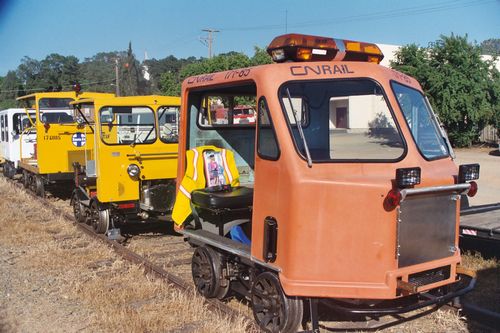
There was also a Hand Car at the RailfFair. These hand powered cars were the forerunners of the newer gas powered track inspection vehicles.
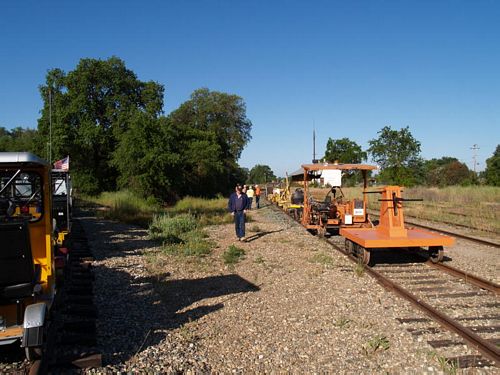
This small rail grinder towed behind a speeder reshapes the track head. The new models are the size of boxcars and much more complex in design.
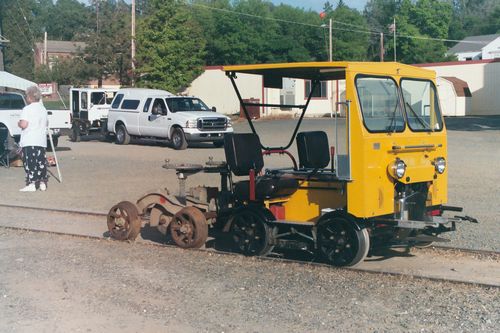
Here we have a MT19 followed by a MT14 on a rainy day doing a track inspection, Larry Bowler, President of RRC, hams it up for the cameras.
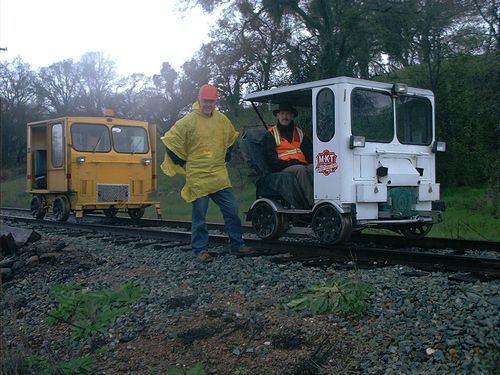
Preparations for operational check out of the grade crossing signals. Prior to running the excursions we made sure all the bells and lights were operated properly.
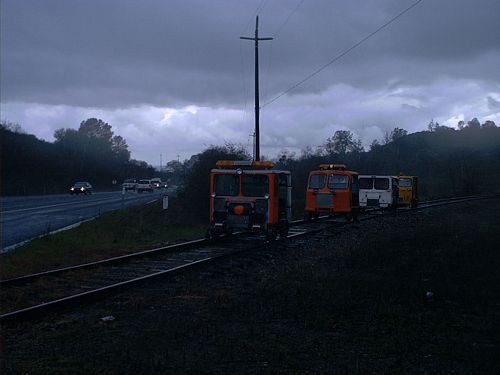
And then the campground Hobo Camp behind the High School next to the Ione Railroad Station where numerous Speeder operators and their families camped out for three days.
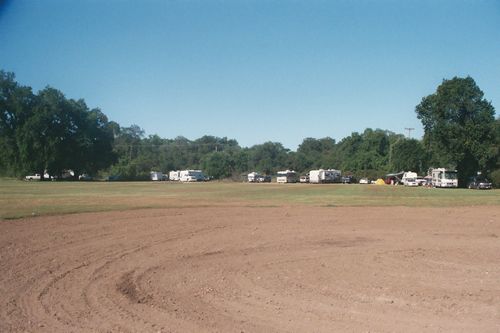
Trackside displays set up for Historical Presentations. Booths and Video presentations.
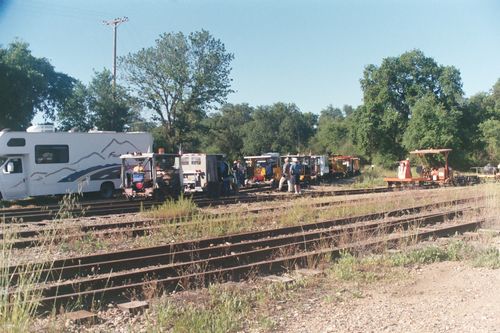
A Safety Meeting and briefing was conducted prior to doing the Excursion Runs each day. David Balesteri, Superintendent of the Ione Branch and a Board Member of Motorcar Operators West was the Event Coordinator. Dave did a great job of keeping the event running smoothly and safely. There where no safety problems encountered on the 3 day event, everyone did their part to insure a safe operating environment and cooperated with the Event Coordinator. Dave was also in constant radio communications with the Flagging Crew.
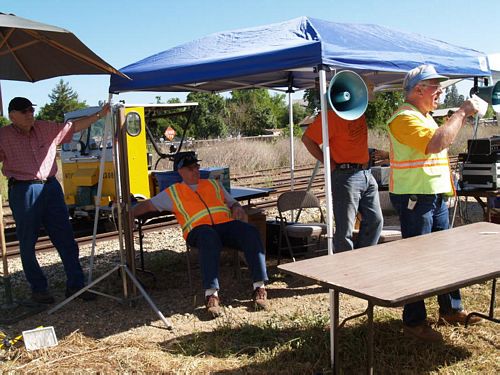
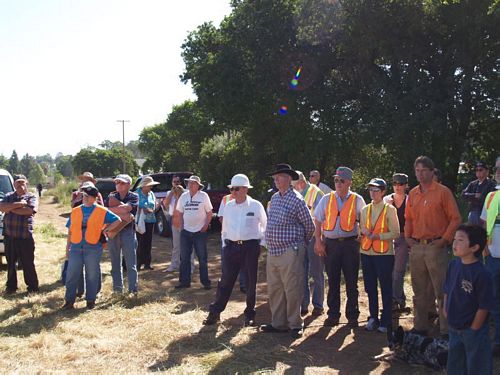
Along the way there were numerous grade crossings and a lot of scenery to look at. One run was done after dark set in, our Saturday Evening Night Run. A Flagging Crew provided safe crossing of the four Grade Crossings, two of which were semi-congested with automobiles. In addition to the Flagers we also had the ability to activate the Railroad Grade Crossing lights and bells. This year we will be able to actually operate and drop down the Crossing Arms along with the lights and bells to provide a safer grade crossing environment.
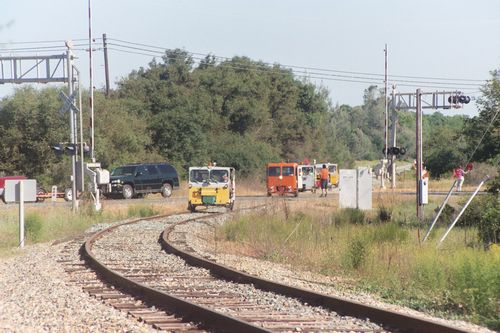
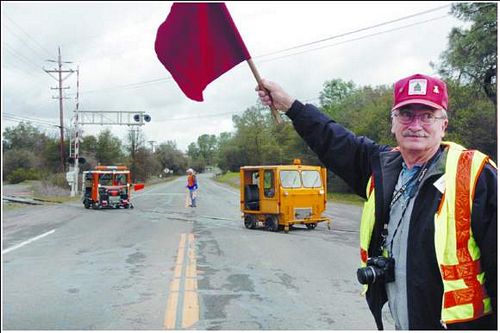
Prior to crossing the main Highways all speeders were accounted for and there were safety procedures in place in case any Speeders had difficulty maneuvering the grade crossings.
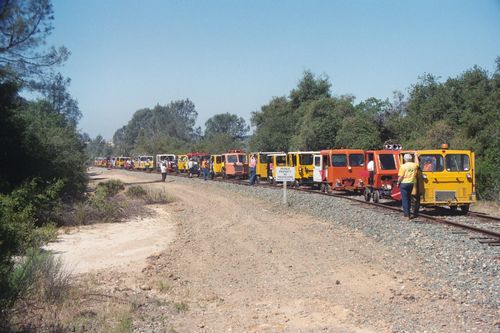
Finally at Martell at the top of the main line near Jackson, the turn around platform.
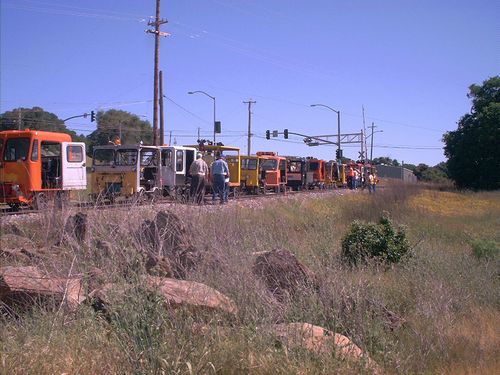
And then, a few unique photos along the route between Ione and Martell will follow.
There is a 1,100 foot change in elevation from Ione to Martell along the 11 mile route, at places there is a much as a 4.5% grade to traverse. This is the steepest Short Line Railroad in the state of California and the West Coast.
Ivan was the last of a list of steamers used on this Branch, Iron Ivan Number 7, was classified as a “Prairie” type locomotive, a Baldwin 2-6-2, it had the smaller 44 inch drive wheels that had the advantage of providing more power on this steep grade as well as making the numerous curves easier over the conventional Steam Engines of it’s era. At mid point along the route there was a water tower to replenish Iron Ivan at Sunnybrook.
As the rails twist through the picturesque isolated countryside “speeder” operators and their passengers are treated to viewing wild life seldom seen before out “in the wild”, Wild Turkeys, Bob Cats, Coyotes, Horses, Cattle, Mountain Lions, an assortment of birds, foxes, and the occasional snakes along the route, such sights that are rarely seen from any road way. There were Clay Pit Mines along this route that were serviced by Iron Ivan and a Copper Mine as well.
The rails are over 100 years old; they are maintained by a large dedicated group of Railroad Preservation Volunteers, known as The Recreational Railroad Coalition, founded by Larry Bowler, Ric Masten, Tod Hill and Steve Paoletti. Bowler serves as President of the RRC. The groups efforts are to reclaim, restore, and maintain abandoned Railroad Corridors for Historical and Educational purposes. Researchers from several Historical Society's have ridden with us on this route to document the History of this Railroad and the now gone clay plants and mines it provided service to in the past.
Enjoy the picturesque photos of the Branch line that follows.
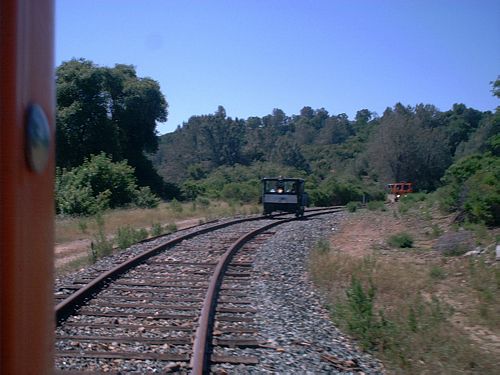
Across Highway 88 on a steel trestle. A view from a Speeder approaching the trestle.
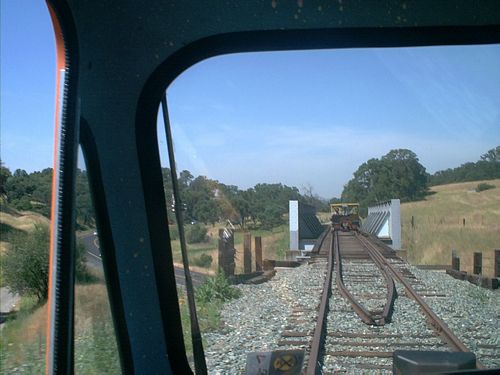
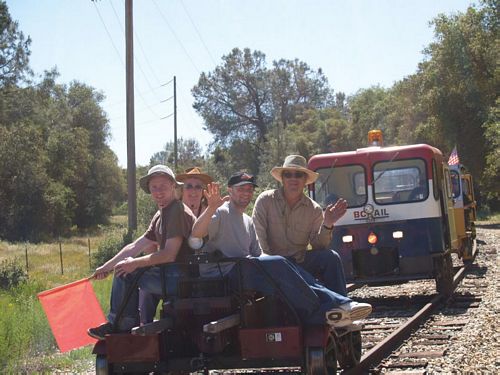
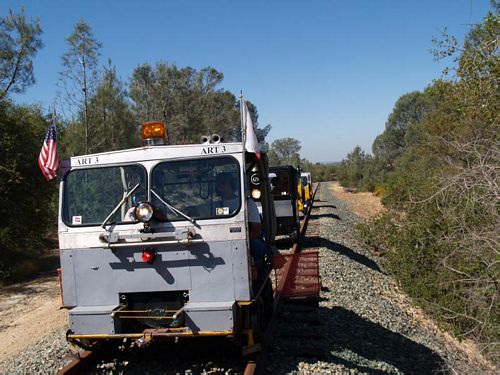
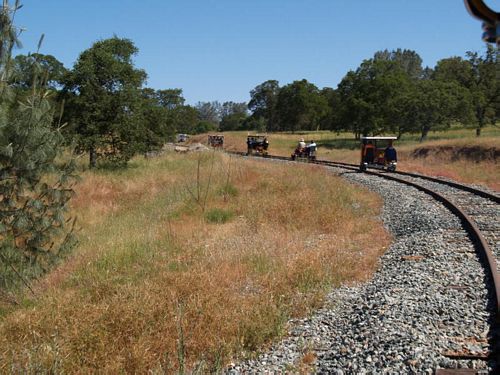
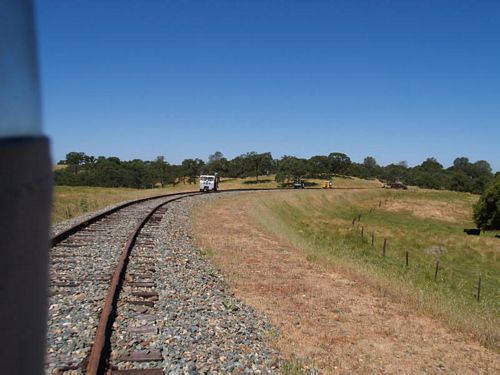
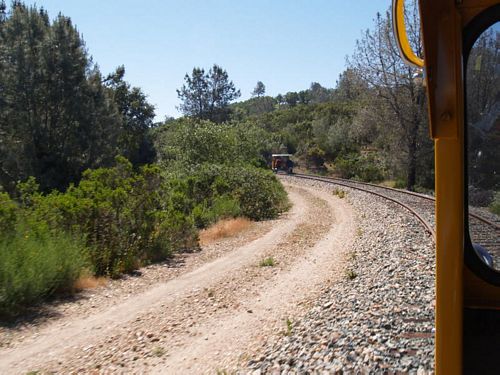
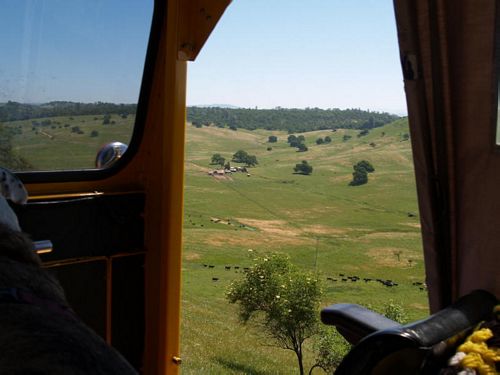
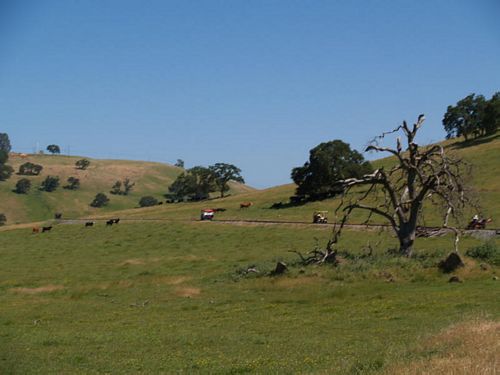

Site of an old copper mine, this area was "rich" in all sorts of mines, gold included.
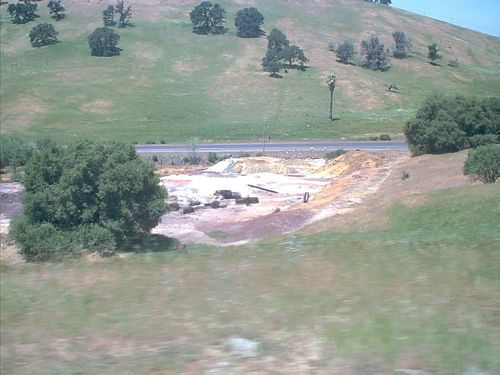
And last but not least. Here we have "Iron Ivan" on display behind City Hall in Ione, California. This was the last steam locomotive to run on the Amador Central Railroad and one of two surviving steamers from this unique short line. Iron Ivan was originally built for the Mc Cloud River Railroad in 1901. The Baldwin 2-6-2 number 8 Prairie type locomotive was sold to the Amador Central Railroad in 1939 and became number 7. Iron Ivan went into "standby mode" with limited duty in the late 1940's and was retired in 1956. In 1960 Iron Ivan was put on display in a park behind the Ione City Hall.
